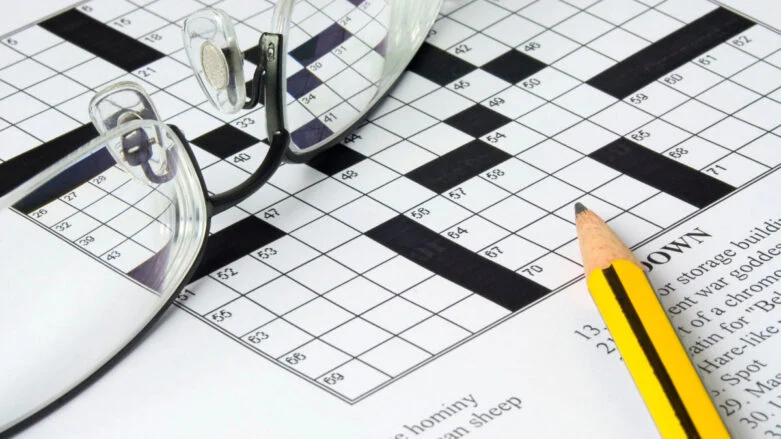The specification for a cut NYT crossword has become one of the most sought-after topics among crossword enthusiasts, puzzling newcomers and seasoned solvers alike. The New York Times Crossword is legendary for its clever wordplay, mind-bending clues, and meticulously crafted grids. But what exactly does “cut” mean in this context, and why are its specifications important? In this detailed guide, we’ll break down everything you need to know about this fascinating crossword feature, from why it’s so popular to the benefits it offers, along with useful hints to improve your solving skills.
What is the Specification for a Cut NYT Crossword?
A cut NYT crossword refers to a specific type of crossword puzzle design where a clue or solution undergoes some form of trimming or wordplay. In crossword terminology, a “cut” usually implies that a portion of a word or phrase is removed or altered, leaving solvers to figure out the missing part. These puzzles often require advanced problem-solving techniques and a keen understanding of crossword mechanics.
The specification for a cut NYT crossword varies based on the puzzle’s complexity, but it typically includes:
- Wordplay elements: Clues involving anagrams, puns, or abbreviations.
- Grid layout considerations: A symmetrical design with black and white squares forming the “cut” pattern.
- Theme integration: A creative concept tying the wordplay into a consistent theme.
- Cross-referencing clues: Clues that rely on other answers for full comprehension.
These specifications ensure that each cut crossword delivers an engaging, fair, and challenging experience for solvers.
Why is the Specification for a Cut NYT Crossword Important?
The importance of specification for a cut NYT crossword lies in its ability to provide structure and consistency to puzzles. Without proper specifications, crosswords may lack fairness or become overly confusing, leading to frustration rather than enjoyment. Here’s why specifications matter:
- Fairness and balance: Well-defined rules prevent ambiguities and ensure all solvers have a clear path to finding the correct answers.
- Challenge without frustration: Specifications strike the right balance between difficulty and solvability, keeping puzzles challenging yet accessible.
- Quality control: Editors follow these guidelines to maintain the high standard expected from the New York Times Crossword.
- Theme coherence: Specifications ensure that all clues and answers in a themed puzzle align with the central concept.
With standardized specifications, solvers can trust that their efforts will be rewarded with logical, satisfying answers.
Why is the Specification for a Cut NYT Crossword So Trending?
Crosswords, especially those published by the New York Times, have seen a resurgence in popularity, thanks in part to their unique features like “cut” puzzles. The rise in interest can be attributed to several factors:
- Increased access through digital platforms: Online crossword subscriptions and mobile apps have made puzzles more accessible than ever.
- Challenging brain exercises: Solvers enjoy the mental stimulation and problem-solving thrill offered by cut crosswords.
- Social media sharing: Crossword culture thrives on platforms like Twitter and Reddit, where solvers discuss clever clues and share their solving experiences.
- Celebrity interest: Public figures frequently mention their love for crosswords, adding to the puzzle’s cultural appeal.
- Evolving puzzle themes: Modern puzzles incorporate pop culture, current events, and creative wordplay that attract a younger audience.
Cut puzzles, in particular, offer an extra layer of intrigue that captivates both novice and experienced solvers, fueling their trending status.
Benefits of Solving a Cut NYT Crossword
Engaging with the specification for a cut NYT crossword offers numerous mental and emotional benefits. Solving these puzzles is more than just a pastime — it’s an exercise for the brain.
- Improved vocabulary: You’ll encounter new words and phrases regularly.
- Enhanced problem-solving skills: Navigating tricky clues sharpens logical thinking and pattern recognition.
- Memory boost: Crossword-solving stimulates memory retrieval processes.
- Stress relief: Focused mental engagement can be a calming, meditative activity.
- Increased cultural knowledge: Many puzzles incorporate references to literature, history, and current events.
- Sense of accomplishment: Completing a challenging puzzle delivers a rewarding sense of achievement.
These benefits make crosswords an enjoyable and productive hobby for millions of enthusiasts around the world.
Useful Hints for Solving a Cut NYT Crossword
Mastering a cut crossword requires strategy and skill. Here are some practical tips to improve your solving prowess:
- Start with the easiest clues: Solve straightforward clues first to build momentum.
- Look for familiar word patterns: Identifying common prefixes, suffixes, or letter combinations can speed up your progress.
- Utilize cross-referencing: Pay attention to clues that refer to other answers in the puzzle.
- Focus on the theme: The theme often provides hints about the type of wordplay involved.
- Work backward from known letters: If you’re stuck, use already-filled-in letters to deduce possible words.
- Think outside the box: Remember that cut crosswords often involve unconventional wordplay or hidden answers.
By following these strategies, you’ll become a more efficient and confident solver.
Specification for a Cut NYT Crossword
Understanding the full specification for a cut NYT crossword will enhance your appreciation for its design and complexity. This specification typically includes:
- Grid structure: Symmetrical grids with standard dimensions (e.g., 15×15 for weekdays).
- Word count limits: A maximum of 78 words for a 15×15 puzzle.
- Theme constraints: The theme must be original, clever, and consistently applied across related clues.
- Clue construction rules: Each clue should provide a fair, solvable path to its corresponding answer.
- Balanced difficulty: Puzzles are progressively harder as the week progresses, with Monday being the easiest and Saturday the toughest.
This meticulous attention to detail ensures a high-quality solving experience.
Frequently Asked Questions
What makes the New York Times Crossword unique?
The NYT Crossword stands out for its clever wordplay, consistent quality, and challenging puzzles designed by top constructors.
How can I improve my crossword-solving skills?
Practice regularly, start with easy puzzles, and study common wordplay techniques to become a better solver.
Why do some clues seem intentionally misleading?
Misleading clues are often intentional, designed to challenge your thinking and reward creative problem-solving.
What does “cut” mean in crossword terminology?
In crosswords, a “cut” can imply trimming or altering words or phrases as part of the puzzle’s wordplay mechanics.
Are cut crosswords suitable for beginners?
Cut crosswords can be tricky, but with practice and strategy, even beginners can learn to enjoy them.
Where can I find more NYT crosswords?
Subscribe to the New York Times Crossword app or website for daily puzzles and archives.
Also Read: Request that one can nyt crossword: Unpacking the Challenge


